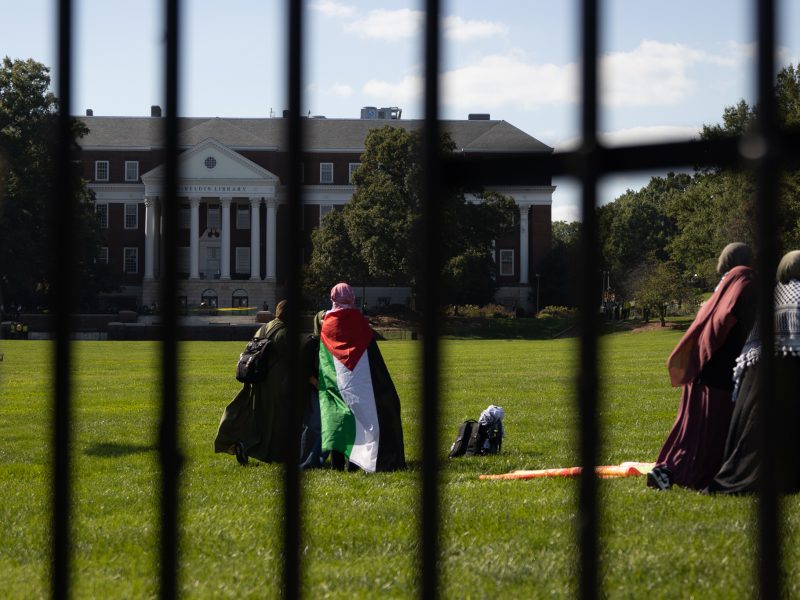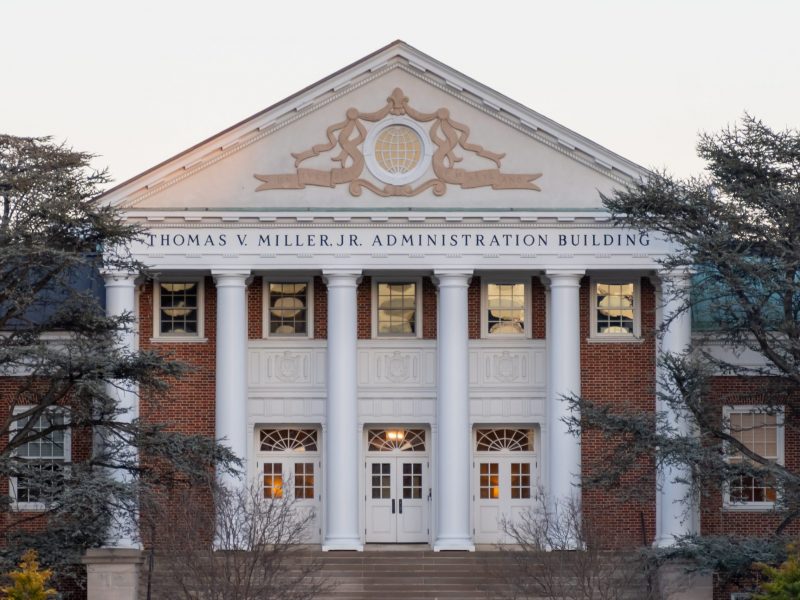
McKeldin Library
Officials are mapping out $100 million in future renovations to McKeldin Library, less than a year and a half after completing a multiphase update to the library’s second floor.
The plans, which Libraries Dean Patricia Steele presented to the Resident Hall Association last night, do not yet have a start date. Architecture graduate students have developed blueprints for a proposal to change the north side of the building. To move away from the “purgatory”-like design, Steele said, officials plan to redo the back section with a glass wall, supporting an environmental layout that holds or expends heat depending on the season.
“We want to bring a lot of technology and make a really aesthetic space,” Public Services Associate Dean Gary White told the body.
The renovations will develop a “sense of pride,” White said.
To ensure the renovations make the most of space available, developers questioned students about what they would want to facilitate studying. Accommodating students’ desires for a traditional library environment, the plans will keep half of the stacks on the shelves. One student’s initial idea proposed a “tree-house”-like environment where students could study away from hustle and bustle in the library, Steele added.
Next semester, library officials will delve into the details of a first-floor update — the first plan in the renovation — and will again consult students on what they want to help create an effective library environment.
With the university’s upcoming July entry to the Committee on Institutional Cooperation (CIC) — an academic consortium made up of the Big Ten Conference’s 12 schools and the University of Chicago — new connections will help McKeldin provide a vast library of digital books. This will further lower the number of books officials will need to hold on the shelves; each book costs $4.15 a year for the library to hold, while it only costs 15 cents to “place” a book on a digital library.
This university’s libraries are now ranked 10th in spending on electronic resources as a percentage of total library materials among the 125 members of the Association of Research Libraries, a nonprofit that promotes the future roles of libraries. Readership of physical books had declined as well — a study conducted at McKeldin found 40 to 50 percent of the library’s books had not been checked out in the last 10 years, Steele said. In addition to holding 3.8 million volumes, the university’s library resources include 17,000 electronic journals, 600,000 electronic books, more than 350 databases and a rental system for laptops, e-readers, tablets and cameras, according to its website.
Officials said they must expand more practical online resources while accommodating students’ desires for a traditional library environment.
“You can almost trace the growth of the expenditures on electronic resources with the downward spiral of book circulation,” Steele said.
A year and a half after the second floor of McKeldin Library reopened following a $1.6 million multiphase renovation to address the need for more designated group and individual study space and computer accessibility, the challenge officials are now finding is “being all things to all people,” said Eric Bartheld, a McKeldin spokesman.
“Need first, space second,” Steele said of plans for the next update. “We really have to engage users all the time to make sure the right need is being described for this whole thing.”
The previous repurposing was meant to help today’s students, Bartheld said.
“That second floor is all collaborative spaces and technology. You don’t see a book on that floor, and that’s not on accident. It’s not what students really need to get their work done,” he said, noting it was designed for group work and meeting technological needs.
However, not all students were pleased with the results. Officials should try to balance a traditional study settings with more contemporary aspects in their next update, said Cara Reilly, a freshman English major.
“The second floor is definitely the most modern and the nicest part of McKeldin, but it’s also always really loud and crowded,” Reilly said. “Most of the library is conducive to studying, but I find it hard to concentrate on that specific floor.”
While freshman journalism major Matt Present mainly uses McKeldin’s online databases for research papers, he agrees that a wealth of books is essential.
“It wouldn’t be a library without books,” he said. “But, with that said, I think if more books were available online, it would certainly be a convenient asset.”
Reilly added some teachers require students to use books in addition to online resources for papers. Having something tangible makes a difference, she said.
“It’s easier for me to read and comprehend when I’m reading a book compared to when I’m reading online,” she said. “I tend to get very distracted when using Internet resources.”
Before conducting renovations last year, Steele said they asked anthropology students to conduct a study about which improvements students desire in a library. For many, it was the presence of books, according to Steele.
“They wanted books to be a prominent and physical part of the library,” Steele said. “Books gave them, I think, a historical perspective … that made them feel like they were going to do important work.”
“We can’t let the users’ needs get lost in all of this,” she added.


